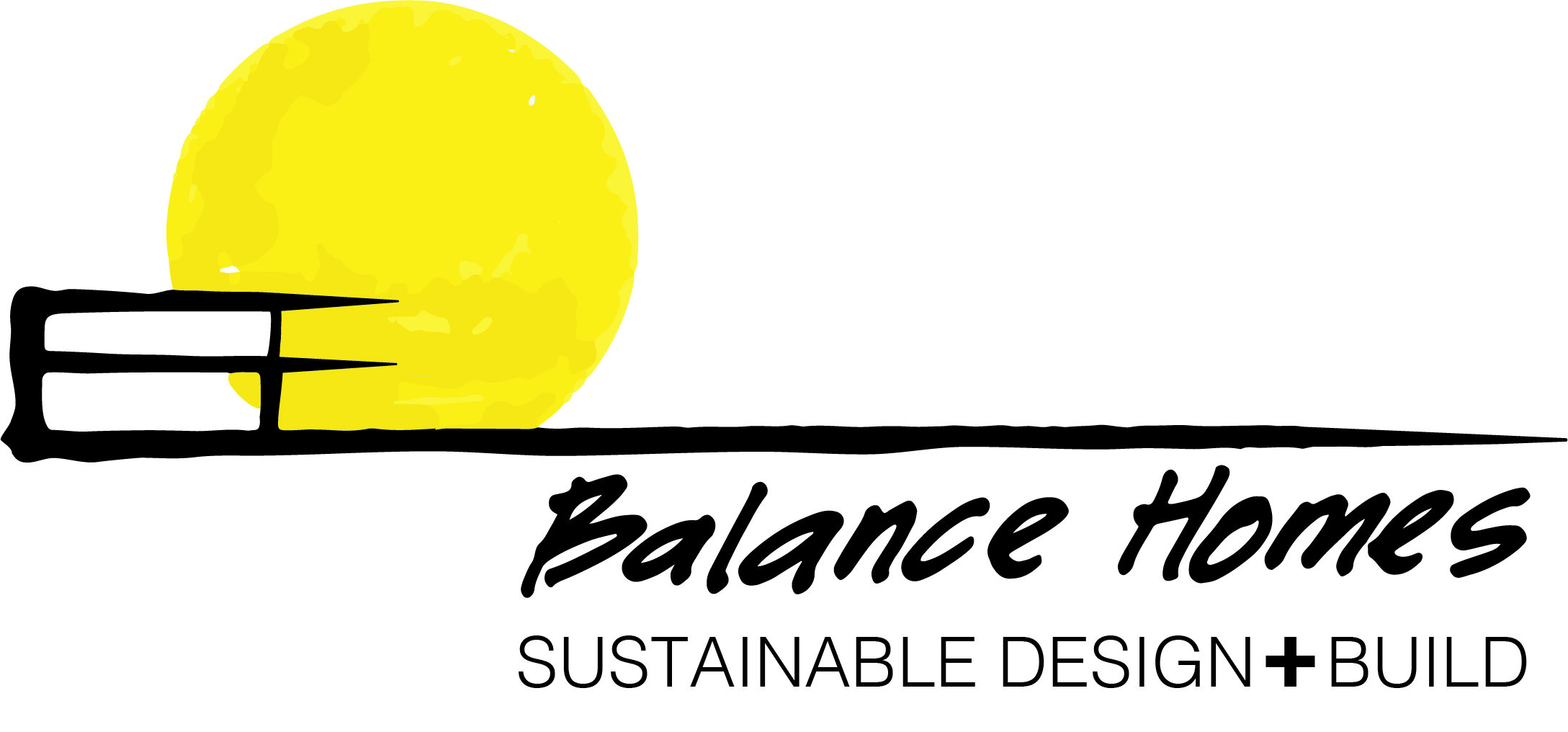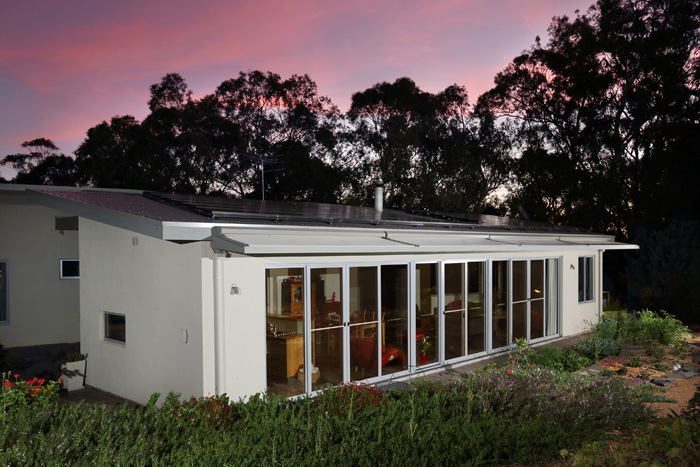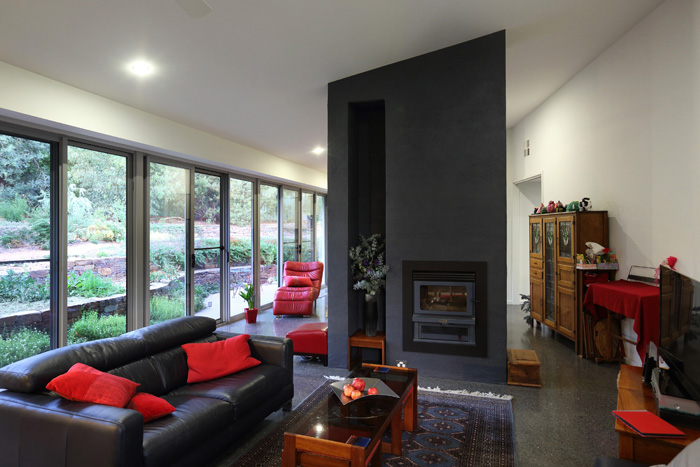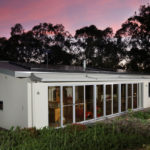Case Study: Eden Hills
Combining striking contemporary architecture with sustainable design and energy-efficiency principles, this two-bedroom, double-study, open-plan home in the Adelaide Hills delivers modern, stylish and environmentally-responsible living.
House Summary
• Produces more electricity than it uses.
• Self-sufficient water supply.
• Recycles all waste water.
• Naturally comfortable and healthy.
• Architecturally pleasurable for inhabitants.
Key features:
| Orientation and Cross Ventilation: | The “H” design floor plan maximises the northerly aspect and window placement for passive heating and ventilation. The North and South sections of the house are linked by a breezeway. |
| Thermal Mass: | Rendered brick walls are strategically located inside the home to provide thermal mass with stunning aesthetic effect. Exposed-aggregate concrete flooring adds thermal mass. |
| Insulation: | An extraordinary level of insulation includes- Roof: 50mm building blanket R 1.5. Ceilings: Bulk batts R 4.0 External walls: Hebel cladding, Air cell insulation, R 2.0 batts = 4.7 |
| Glazing: | All windows and sliding doors are double glazed. |
| Roof Design: | Computer modelling was used to specifically size each eave overhang to shade each wall and window through summer, while allowing winter sun direct access to internal thermal mass surfaces. |
| Electricity Generation: | A 4.7 Kwt grid connect solar array produces substantially more energy than the house consumes. |
| Plumbed Rainwater: | A 47,000 litre concrete rainwater tank has been constructed below ground and is plumbed to the entire home. It is fed from the Colorbond roof through insect screened rain heads to a flushable/divertible pipe system. |
| Black and Grey Water Treatment: | All waste water from the home is treated through a sand filter system and used as garden irrigation. |
| Heating/Cooling: | The home’s superior insulation, ceiling fans and passive solar design reduce the need for supplementary heating and cooling, hence minimising energy costs without compromising comfort. A high efficiency slow combustion heater warms the whole house. A warm air transfer system circulates air around the house. |
| Flexibility in Design: | Outdoor areas have been constructed to provide alternative living spaces to suit different seasons. |
“Our home is unique, and a delight to live in,” says owner Margie Ripper. “It is remarkably energy efficient, beautiful, quiet, and quirky. Having now lived in it through all seasons we appreciate the passive heating and cooling elements that keep it warm and light in winter and cool and light in summer – without the need for air-conditioning”




